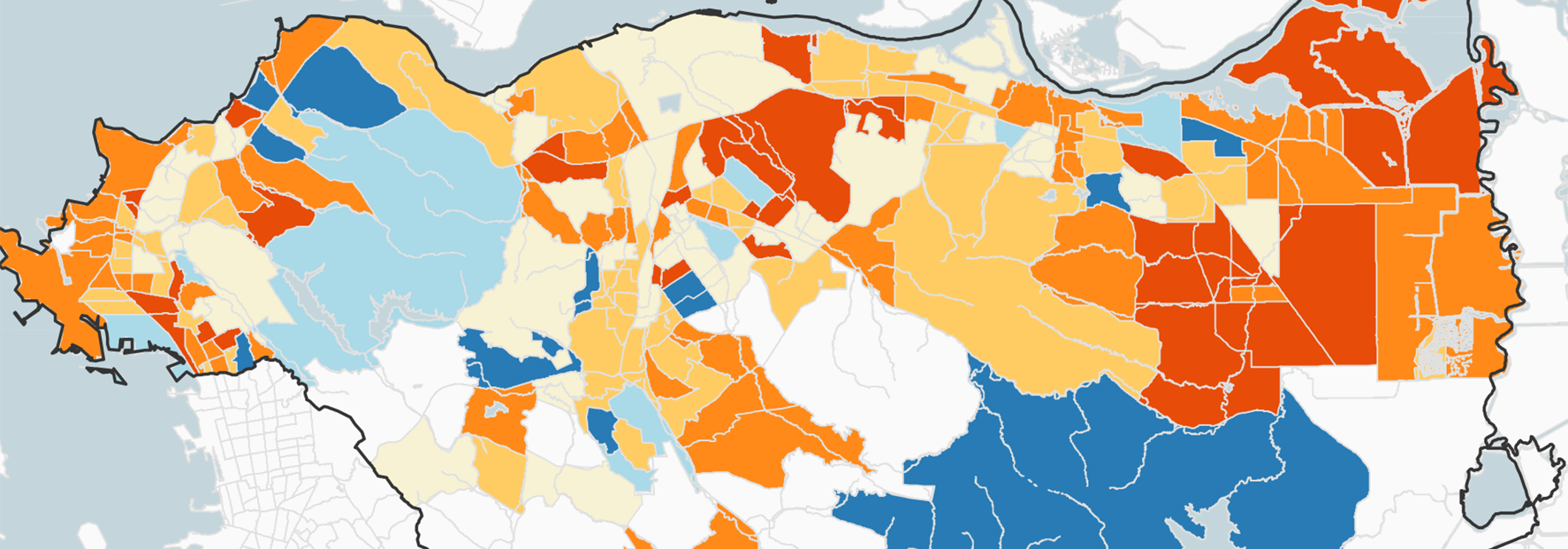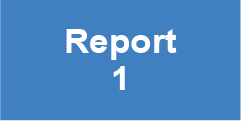The California Housing Partnership’s Research Team provides independent program support, analysis and evaluation, as well as other forms of technical research assistance to public entities, advocacy/nonprofit organizations, foundations, academic institutions and other partners. Please submit inquiries through our Contact Us form.
The work of the Research Team falls into the following general categories:
- Housing Need / Housing Market
- Benefits of Affordable Housing
- Program Evaluations
- Preservation
- Fair Housing, Displacement, Migration, Gentrification
- Legislation & Program Development
1 | Housing Need / Housing Market
Tracking California’s Housing Needs: County Reports & Housing Needs Dashboard
2014 to Present
The California Housing Partnership has documented the housing needs of California’s low-income families since 2014 through affordable housing statistics, trend tracking, metrics and key housing indicators. With the support of NLIHC, the California Housing Partnership documents the gap in affordable homes versus need and looks at costs that the lowest income renters face statewide and at the county-level. Using innovative analysis and graphics, these annual reports underscore the devastating impact of the loss of state redevelopment funding, the high wages needed to afford median asking rents, and how little low-income renters have to spend on essentials after paying rent. View this year’s reports: California 2020 statistics and key housing indicators for all 58 counties.
Guiding Los Angeles County’s Affordable Housing Resources: Affordable Housing Outcomes Report
2016 to Present
Commissioned by the Los Angeles Board of Supervisors in 2016, the California Housing Partnership researches and produces an annual Affordable Housing Outcomes Report for the County. The report provides critical baseline data and tracks trends in need and affordable housing investments in the County and provides recommendations to guide future affordable housing investments. The Partnership updates and improves the report with input from the County CEO, Board of Supervisors’ staff, the County Affordable Housing Coordinating Committee, and community stakeholders.
Tracking Housing Production and Availability in Los Angeles County
2019 to Present
With support from the California Community Foundation, the California Housing Partnership is creating and implementing a system for collecting and analyzing housing production and availability data in Los Angeles County, organized by level of affordability and other indicators such as proximity to transit and level of neighborhood opportunity. This tool will be used to track progress over time and inform affordable housing advocacy in the County.
2 | Benefits of Affordable Housing
Increasing Public Access to Affordable Housing Data: Affordable Housing Benefits Map
2019 to Present
With support from the Citi Foundation, the California Housing Partnership engaged in an effort to use its comprehensive database of federal- and state-funded affordable rental housing to create an interactive, web-based map with both public and password-restricted interfaces that illustrates: 1) basic information about each development, the population it serves, how it was financed, and how long it has been in operation; 2) estimates of social and environmental benefits of each development, as supported by research on the impact of affordable housing; and 3) a proprietary risk-of-loss assessment and estimate of benefits that would be lost if a development is converted to the market.
3 | Program Evaluations
Affordable Housing Sustainable Communities
2014 to Present
The California Housing Partnership has worked with allies to support the creation, protection, and continual improvement of the Affordable Housing Sustainable Communities (AHSC) program, which provides critical funding for affordable homes and transit infrastructure using revenue from the state’s Cap and Trade auctions. The Partnership’s groundbreaking report with TransForm in 2014 and with the Center for Neighborhood Technology in 2015 made the research case for the program’s creation. Since 2017, TransForm, Enterprise Community Partners and the Partnership have published reports on the impacts of each funding round, quantifying the social, environmental, and community benefits of the AHSC-funded developments. The California Housing Partnership will continue to work with allies to support, track and improve the program’s performance to ensure that it maximizes benefits for vulnerable people and communities while reducing greenhouse gas emissions.
Low Income Housing Tax Credit (LIHTC)
2001 to Present
In this series of reports, the California Housing Partnership has investigated the benefits and impact of the Low Income Housing Tax Credit in its 1) fifteenth year and 2) thirtieth year of operations, to track the earliest tax credit-funded developments at risk of conversion at the conclusion of their regulatory agreements.
Chronic Homelessness Initiative in San Francisco
2019 to 2022
The California Housing Partnership is part of a team led by the Urban Institute that Tipping Point selected to evaluate its Chronic Homelessness Initiative (CHI)—a $100 million investment with the goal of reducing chronic homelessness in San Francisco by half within five years. The California Housing Partnership’s role in this effort is to evaluate the Chronic Homelessness Initiative’s capital investments in the production of new permanent supportive housing. The evaluation will include interim updates until the initiative ends in 2022, after which a final evaluation will be completed.
4 | Preservation
Conducting Statewide Risk Assessments
To inform affordable housing preservation efforts across California, the California Housing Partnership annually assesses the historical loss and conversion risk of federally- and state-subsidized affordable rental properties.
Preservation Clearinghouse
The California Housing Partnership’s Preservation Clearinghouse is the state’s most comprehensive source of information on subsidized affordable housing at risk of losing its affordable status and converting to market-rate housing. The Partnership maintains the only comprehensive database of all HUD subsidized properties, USDA Section 515 rural properties, and properties financed with Low Income Housing Tax Credits in California. We use the database to identify affordable properties that are at risk and should be targeted for preservation. The California Housing Partnership makes our database results available to local governments and nonprofit housing partners upon request. Please see our Preservation Database Access Policy.
5 | Fair Housing, Displacement, Migration, Gentrification
Fair Housing Task Force and Shaping State Approaches to Affirmatively Furthering Fair Housing
2016 to Present
The California Housing Partnership is committed to developing approaches to deploy our state’s housing funding resources in a way that increases access to opportunity for low-income Californians and Californians of color—as required by the affirmatively furthering fair housing (AFFH) duty in the federal Fair Housing Act—and is both evidence-based and responsive to the practical constraints nonprofit housing developers face. In 2016, the California Housing Partnership analyzed the state’s preliminary proposal to alter the competition for Low Income Housing Tax Credits (LIHTCs) to align with AFFH goals and found serious flaws in the initial methodology, which it brought to the attention of state housing leaders and helped win a stay of its full implementation. In 2017, the California Housing Partnership worked within the state-convened California Fair Housing Task Force to create more accurate and practical regional opportunity maps. Separately, the Partnership developed new incentive proposals with input from housing developers and drawing from original research showing the significant the cost premium incurred by housing developers working in higher opportunity areas. The California Tax Credit Allocation Committee (TCAC) ultimately adopted both the regional opportunity maps and a version of the incentives the Partnership proposed in an effort to attract more developers to build family-targeted affordable housing in high-resource neighborhoods. In years since, the Partnership has worked with the Task Force to improve the methodology and data behind the opportunity maps.
Analyzing the Intersection of Displacement, Race, and Fair Housing
2018 to 2021
With support from The San Francisco Foundation, the California Housing Partnership engaged in a research project documenting the relationship between rental housing affordability and patterns of displacement, segregation, and unequal access to opportunity for low-income people of color in San Francisco, Alameda, Contra Costa Counties since 2000. The results of the research inform state AFFH policies and local policymakers about current displacement patterns as well as provide them with housing policy-related ideas for mitigating displacement. The Urban Displacement Project at UC Berkeley was our partner on this project. Our findings were published in Fall 2018. We are seeking funding to expand this research to other parts of the state.
Quantifying Neighborhood Housing-Driven Changes to Support Place-Conscious Policy Decisions
2019
With support from The San Francisco Foundation, the California Housing Partnership is engaged in a research project in partnership with the Urban Displacement Project at UC Berkeley to identify low- and moderate-resource neighborhoods on a trajectory to becoming high-resource as a result of housing market changes and/or revitalization efforts. This analysis is intended to inform state and local efforts to affirmatively further fair housing by increasing—and maintaining—access to opportunity for low-income communities of color.
6 | Legislation & Program Development
Roadmap Home 2030
2019 to 2021
Housing California and the California Housing Partnership are leading a coordinated, statewide effort to propose the long-term structural and systems change policies necessary to address our housing affordability and homelessness challenges, with the goal of informing the Governor’s and Legislature’s actions in the near term. This 10-year policy blueprint advancing actionable and evidence-based solutions draws on the expertise of a wide spectrum of partners including engaged and diverse policy and research advisory committees that are guiding the Roadmap Home’s development.












